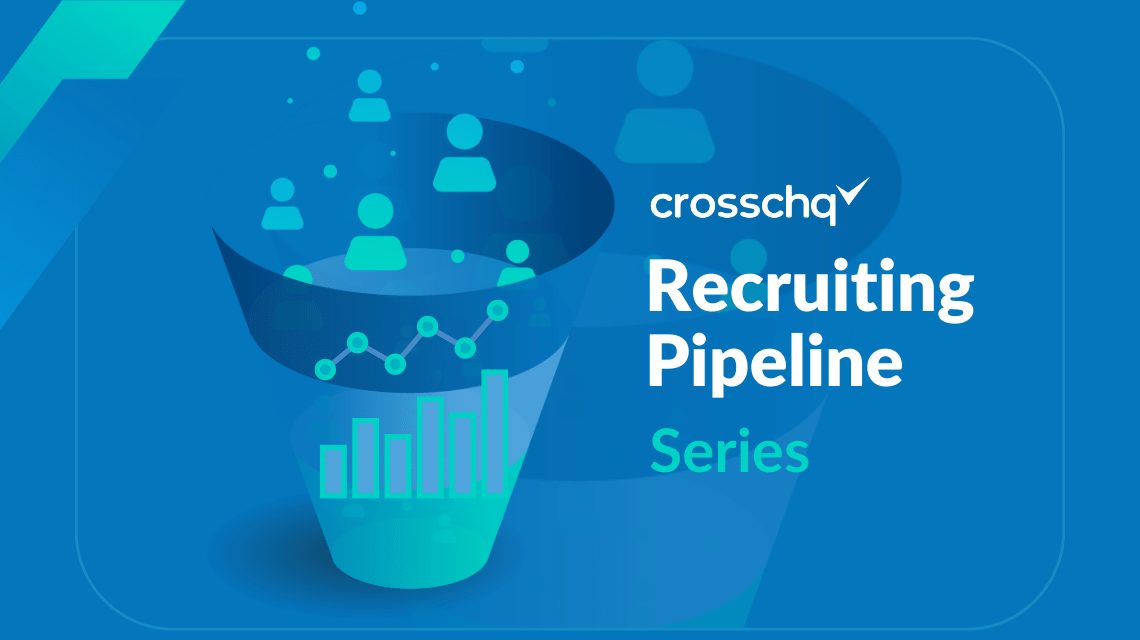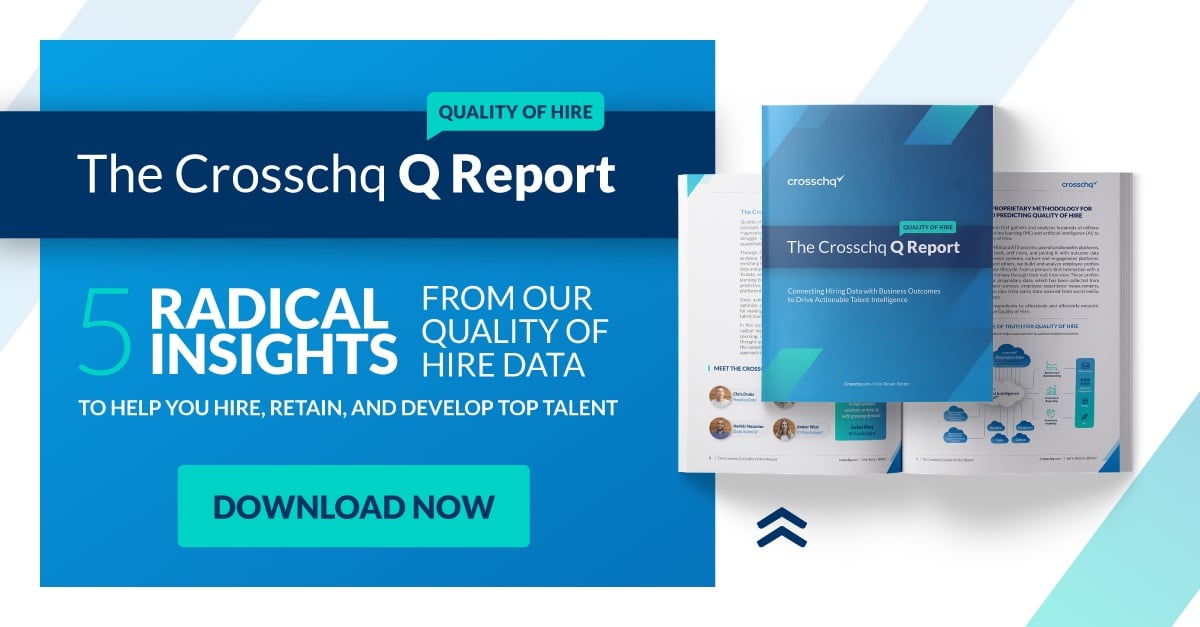

Crosschq Blog
Top 6 Recruiting Pipeline Metrics to Track in 2023

A hiring pipeline is only as strong as its weakest link, but finding that link and strengthening it can be a challenge. Tracking your recruiting pipeline metrics is the answer.
Knowing which recruitment pipeline metrics to track can reveal the health of your hiring pipeline, whether or not your recruiting efforts are aligning with core business objectives, and where you need to make changes to improve Quality of Hire and speed-to-hire.
Here are the six pipeline metrics you should be tracking to gain insight into the effectiveness of your hiring process in surfacing and nurturing candidate quality.
1. Pass-Through Rate
The pass-through rate is key to many other metrics you’ll need to be able to track and analyze in order to build a better hiring pipeline. This is a fairly simple metric to track if you have a tool that provides you with a real-time visual.
TalentWall™ by Crosschq overlays your ATS, and puts pass-through information right at the top of your dashboard, making it easy to see how many candidates are in each stage of the pipeline and how quickly they are moving. It can also help you keep tabs on how diverse your pipeline is, to keep hiring in line with your DEIB initiatives.
Why it matters:
The pass-through rate can be critical if you seem to be wasting time on interviewing dozens of candidates who are a poor fit, failing to attract many candidates at all for key roles, or having an unexpected number of candidates self-select out of the hiring process at a specific stage.
This metric can alert you to a disconnect between your recruiters and hiring managers, indicate that job postings need to be tweaked to attract more qualified candidates or highlight where the hiring process has become burdensome to candidates.
[Related Article: See 3 Ways to Measure Your Talent Pipeline Health]
2. Time to Hire / Time to Fill
There are a lot of variations on this metric. Time to hire is technically the number of days between when a candidate starts their application and when they accept an offer. Time to fill is a longer time period, with the clock starting when a job requisition is approved. Reducing time to hire is a common goal for recruiters and hiring managers.
Why it matters:
Time to hire is an incredibly useful metric when measuring recruitment pipeline health. It can also be expressed as speed to hire, in the context of finding stages where candidates get held up and streamlining them for faster hiring. Speed to hire can also directly impact two other key metrics: cost to hire, and candidate experience.
 3. Cost to Hire
3. Cost to Hire
Cost to hire can be calculated in many different ways. The base cost is how many direct expenses are involved in recruiting to fill a role. This can include not just the costs associated specifically with the candidate accepting the offer, but all recruitment efforts from time of job requisition to time of offer acceptance.
However, cost to hire can also include indirect costs, like how much productivity is being lost within the organization every day the role remains unfilled. These costs can balloon much faster than recruiting costs and negatively impact the bottom line.
Why it matters:
Measuring cost to hire and working towards improving it automatically leads to examining and improving other recruitment metrics as well. Reducing cost to hire is usually linked to improving pass-through rates and speed to hire, as well as source of hire.
4. Source of Hire
Sources of hire can range from internal referrals to online job boards to social media to forum posts. Identifying which source sends you not just the highest number of applicants but the best-qualified candidates can help you narrow your focus. Ideally, you’ll shy away from a scattershot approach and focus your time, effort, and resources on top-performing sources.
Why it matters:
Source of hire can be extremely telling when you dig deeper into the candidates in your pipeline and the performance of your new hires. If one source is sending you 200 applicants a week, and another is only sending 30, but three candidates from each source make it to the interview stage, which source has proved more valuable?
5. Candidate Experience
Candidate experience has become a critical metric over the past few years as the labor force has gained more power. A poor candidate experience can mean losing top talent to a competitor, not to mention that many of your applicants may also be customers of your own.
Factors that add up to a poor candidate experience include:
- Complicated application processes
- Too many pre-hire assessments and tests
- Lengthy waits for interview invitations or offers
- Overall poor, slow, or unclear communication
[Related Article: See How to Measure Candidate Experience]
Improving candidate experience can make even your rejected candidates walk away with a good perception of your company, and they’ll be more likely to recommend your organization both as a business and as an employer. A whopping 81% of candidates say simply getting good communication improves the hiring experience significantly even if they don’t get the role.
Why it matters:
A poor candidate experience can mean the loss of a customer, bad reviews of your company’s recruiting tactics, and the permanent loss of high-quality candidates who otherwise might have applied again in the future.
6. Quality of Hire
Finally, the golden metric for 2023 is anticipated to be the one that emerged in 2022: Quality of Hire. Originally, it was narrowly defined as the value a new hire brought to an organization based on post-hire performance and first-year attrition rates, Quality of Hire is now understood to be much more complex.
Crosschq Analytics helps employers visualize Quality of Hire through more than 80 reports that measure up to six different aspects and break them down visually:
- Performance
- Retention
- Culture add
- Engagement
- Promotability
- Re-hireability
Employees with high Quality of Hire scores not only perform well themselves, but they elevate the entire company. Companies that invest in improving candidate experience report up to a 70% increase in Quality of Hire, showing again that all recruiting pipeline metrics are connected.
Why it matters:
When your existing employees' Quality of Hire can be assessed and updated in real-time, it’s easier to build profiles that help to surface candidates with similar attributes in your pipeline and ensure they are prioritized and nurtured. Download the Crosschq Q (Quality of Hire) Report to learn more about this golden metric.
By tracking these six recruiting pipeline metrics in 2023 and beyond, you can improve speed to hire, decrease cost of hire, enhance candidate experience, increase quality of hire, and more.
To learn how Crosschq can help you streamline and empower your recruiting pipeline management in the year ahead, talk to a product specialist today.
Newsletter Sign Up

by Elena Arney
Director of People & Culture
File Under
Take the Guesswork
Out of Hiring
Schedule a demo now



%20-200x43.png)







